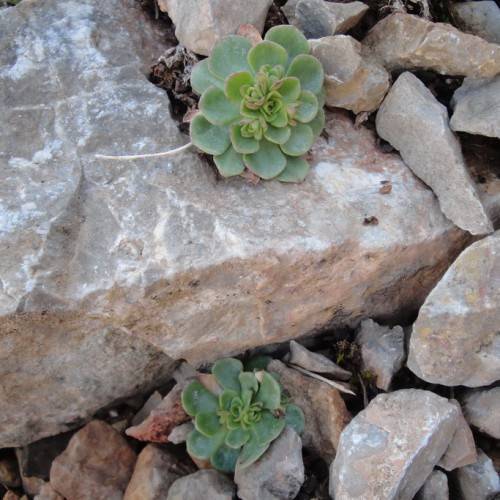
rosularia
Rosularia platyphylla
Cycle:
Herbaceous Perennial
Watering:
Minimum
Hardiness Zone:
5 - 10
Flowers:
Flowers
Sun:
Full sun,part shade
Leaf:
Yes
Growth Rate:
Low
Maintenance:
Low
Drought Tolerant:
Yes
Salt Tolerant:
Yes
Care Level:
Medium
watering
For best results, water rosularia (Rosularia platyphylla) once or twice a week, depending on the season and amount of direct sunlight received. During warmer months, it is best to water thoroughly and allow some drying before watering again. In winter, watering should be reduced and dampness avoided when temperatures remain low. If you notice the leaves wilting, water your rosularia deeply or mist them. Submerging the entire pot in tepid water for a few minutes can help if dry soil persists. Fertilize rosularia every 2-3 months with a balanced 10-10-10 fertilizer for optimal growth and health.
sunlight
Rosularia platyphylla plants require full sun to thrive, with at least 6 to 8 hours of direct sunlight daily. The sun should be most vibrant during the morning and early afternoon for this species of plant. They do not do well in shady or sheltered areas, and too much sunlight can harm the fragile foliage.
pruning
Rosularia platyphylla should be pruned in late winter or early spring. When pruning, remove any dead, diseased, or damaged stems and flowers, or other material that inhibits proper growth. To promote vigorous growth and flowering, prune back the tangled stems, removing them close to the base of the plant. Thin out any stems with excessive crowding or excessive leggy growth. This will help to open up the plant’s structure, promoting more air flow and helping to prevent disease. Additionally, prune back any stems that have grown outside of the desired shape or size for the plant. Overall, prune the rosularia no more than 20-30%, leaving more than half of existing stems and blooms in place. For most rosularia species, it is best to avoid pruning in the middle of the growing season.
